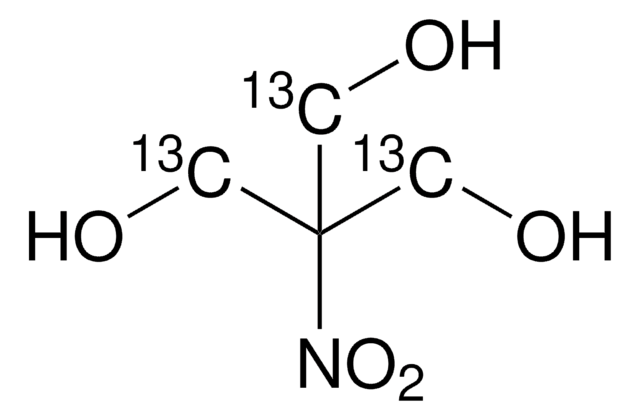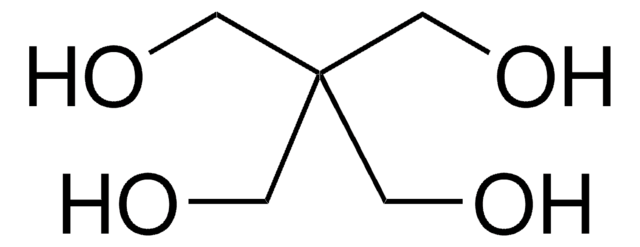108189
Tris(hydroxymethyl)nitromethane
98%
Synonym(s):
2-Hydroxymethyl-2-nitro-1,3-propanediol
About This Item
Recommended Products
Assay
98%
form
solid
mp
160 °C (dec.) (lit.)
solubility
H2O: soluble 220g/100ml at 20 °C
alcohols: freely soluble
benzene: very slightly soluble
hydrocarbons: very slightly soluble
functional group
amine
SMILES string
OCC(CO)(CO)[N+]([O-])=O
InChI
1S/C4H9NO5/c6-1-4(2-7,3-8)5(9)10/h6-8H,1-3H2
InChI key
OLQJQHSAWMFDJE-UHFFFAOYSA-N
Looking for similar products? Visit Product Comparison Guide
Related Categories
General description
Preparation Note
Signal Word
Warning
Hazard Statements
Precautionary Statements
Hazard Classifications
Acute Tox. 4 Oral - Aquatic Chronic 3
Storage Class Code
11 - Combustible Solids
WGK
WGK 3
Flash Point(F)
Not applicable
Flash Point(C)
Not applicable
Personal Protective Equipment
Choose from one of the most recent versions:
Already Own This Product?
Find documentation for the products that you have recently purchased in the Document Library.
Customers Also Viewed
Our team of scientists has experience in all areas of research including Life Science, Material Science, Chemical Synthesis, Chromatography, Analytical and many others.
Contact Technical Service











